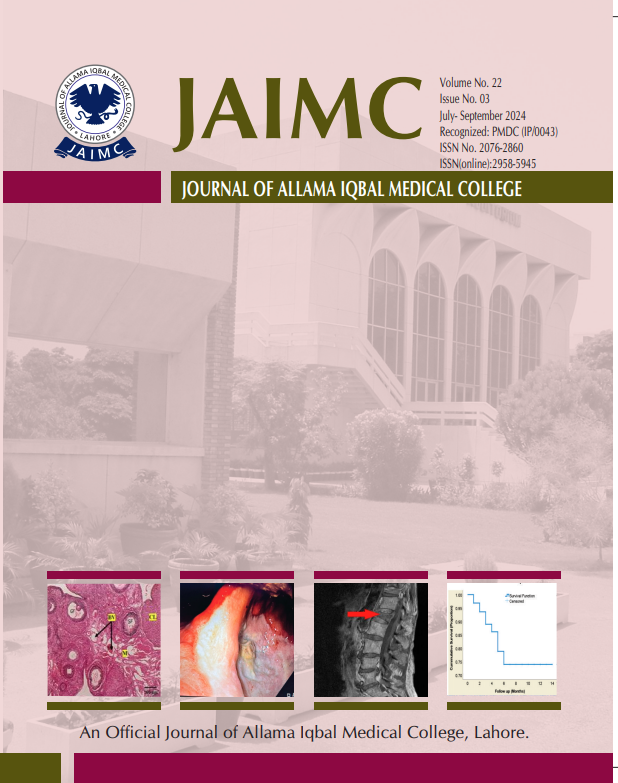Risk Factors for Seroma Development Following Breast Cancer Surgery
DOI:
https://doi.org/10.59058/h71fgn76Keywords:
Seroma, Mastectomy, Breast Conservation Surgery, Hypertension, Breast Neoplasms.Abstract
Background and Objective: Seroma formation is a common complication after modified radical mastectomy and breast conservation surgery in breast cancer patients. This study investigates the factors influencing seroma development in women undergoing breast cancer surgery at a tertiary care hospital in Lahore, Pakistan.
Methods: A retrospective analysis was conducted at a tertiary care hospital in Lahore, including 159 female breast cancer patients aged 20 years and above from 01 august 2020 to 30 September 2022. Patients who underwent modified radical mastectomy (MRM) or breast conservation surgery were included, while those with uncontrolled diabetes, advanced liver disease, or prior axillary surgery were excluded. Data were collected using a semi-structured questionnaire, covering socio-demographic characteristics, known risk factors, and disease history and was analyzed using SPSS-26.
Results: Seroma formation was observed in 37(23.27%) patients out of 159 total patients .On bivariate analysis the findings revealed a higher incidence of seroma among patients from urban areas as compared to rural (29.9% vs 12.9%, p=0.013) and higher in lower socioeconomic backgrounds (> 32% Vs 19.2%, p=0.042). High body mass index (p=0.015) was also associated with increased seroma formation with more in higher BMI as compared to normal BMI ( 29% Vs 11.5%, p = 0.015). Surgical factors, like the number of axillary lymph nodes involved p=0.032) and postoperative wound infections (p<0.001) were also significantly associated with seroma formation. However, on multivariate analysis only body mass index with over weight patients (AOR= 4.89, 95% CI=1.29-8.79) , axillary lymph nodes involvement(AOR=2.88,95% CI=1.18-7.05) and post operative infection (AOR=6.23, 95% CI=2.54-15.28) showed significant association. However, factors such as age, education, neoadjuvant chemotherapy, diabetes, hypertension, and postoperative radiation showed no significant association with seroma formation.
Conclusion: Our study found a higher rate of seroma formation, with possible predictors including body mass index, extent of axillary nodal clearance and post operative infection. Mitigation of these factors can prevent seroma formation and better recovery of patient.
Key Words: Seroma, Mastectomy, Breast Conservation Surgery, Hypertension, Breast Neoplasms.
Downloads
Published
Issue
Section
License

This work is licensed under a Creative Commons Attribution-NonCommercial-NoDerivatives 4.0 International License.
You are free to:
- Share — copy and redistribute the material in any medium or format
- The licensor cannot revoke these freedoms as long as you follow the license terms.
Under the following terms:
- Attribution — You must give appropriate credit , provide a link to the license, and indicate if changes were made . You may do so in any reasonable manner, but not in any way that suggests the licensor endorses you or your use.
- Non-Commercial — You may not use the material for commercial purposes .
- No-Derivatives — If you remix, transform, or build upon the material, you may not distribute the modified material.
- No additional restrictions — You may not apply legal terms or technological measures that legally restrict others from doing anything the license permits.
Notices:
You do not have to comply with the license for elements of the material in the public domain or where your use is permitted by an applicable exception or limitation .
No warranties are given. The license may not give you all of the permissions necessary for your intended use. For example, other rights such as publicity, privacy, or moral rights may limit how you use the material.


